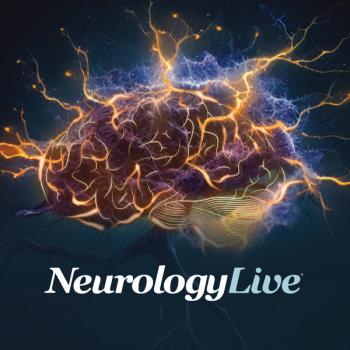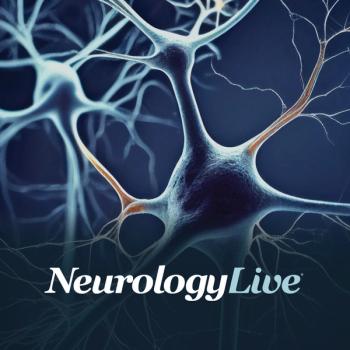
Pitolisant demonstrated a dose-dependent improvement in excessive daytime sleepiness and fatigue, with a safety profile that was consistent with previous studies. Additional data to be shared in early 2024.

Marco Meglio, Assistant Managing Editor for NeurologyLive, has been with the team since October 2019. Follow him on Twitter @marcomeglio1 or email him at [email protected]

Pitolisant demonstrated a dose-dependent improvement in excessive daytime sleepiness and fatigue, with a safety profile that was consistent with previous studies. Additional data to be shared in early 2024.

While specialists still debate the diagnostics of impaired cognition, the identification of patients at the earliest stages is beginning to be met through new biomarkers and available assays.

Using outcomes such as the CDR-SB, ADAS-Cog12, MMSE, and ADCOMS, patients treated with NE3017 for 6 months demonstrated equal, if not greater, improvements than traditional antiamyloid therapies at 18 months.

Over a 32-week treatment period, patients on trofinetide continued to show improvements on the primary efficacy outcomes of Rett Syndrome Behavior Questionnaire and Clinical Global Impression-Improvement total scores.

The findings further supported the idea that prevention and assessment of cardiovascular risk in patients with narcolepsy is critical to ongoing care.

Results showed that evobrutinib did not produce a more superior reduction in annualized relapse rates than teriflunomide, a previously approved disease-modifying agent.

Although not powered for statistical significance, results showed improvements in ALS Functional Rating Scale and slow vital capacity after treatment with PrimeC.

The vice president of the Rare Disease Translational Center at the Jackson Laboratory provided context on a recently published study suggesting restoration of stathmin-2 as a therapeutic approach for ALS.

Although a small-scale study, most infants had a positive response to ketogenic diet, with even greater effects seen in those with Ohtahara syndrome.

The clinical hold is in reference to safety concern observed in the phase 3 FENhance studies of patients with relapsing forms of multiple sclerosis.

With the approval, the appliances represent an alternative treatment to CPAP or surgical neurostimulation implants for patients with severe OSA.

Clobazam and valproate, when used concomitantly, produced a greater treatment effect with ganaxolone than other antseizure medications levetiracetam and vigabatrin.

The retrospective cohort study, led by R. Eugene Ramsay, MD, highlighted the impacts of vigabatrin in patients with super refractory status epilepticus.

Using a caregiver questionnaire, noted improvements in verbal, non-verbal communication, and engagement were observed on soticlestat treatment.

Over a 12-week trial period, Asian patients treated with brivaracetam demonstrated efficacy and safety outcomes that were similar to other populations previously observed.

In an analysis of lacosamide in pregnant women, a low number of preterm birth deliveries were reported, with no new safety concerns identified.

Both pediatric and adult patients with tuberous sclerosis complex demonstrated significant reductions in TSC-associated seizures with no new safety concerns identified.

Mind Moments®, a podcast from NeurologyLive®, brings you an exclusive interview with William Gallentine, DO. [LISTEN TIME: 17 minutes]

Givinostat, a HDAC inhibitor, was supported by data from the phase 3 EPIDYS study, a randomized, double-blind, placebo-controlled, multicenter trial.

PREDICT-PD, a low intensity and cost-efficient assessment, was able to estimate the occurrence of motor disturbances in the future, in particular sub-threshold parkinsonism and bradykinesia.

ACP-204, an inverse agonist at the 5-HT2A receptor, builds upon the learnings of pimavanserin (Nuplazid) in the treatment of neuropsychiatric symptoms.

Heather Synder, PhD, vice president of medical and scientific relations at the Alzheimer’s Association, gave thoughts on the recently concluded CTAD conference and how the organization plans to carry the positive momentum in the field.

The director of the headache section at Cleveland Clinic’s Neurological Institute provided thoughts on how recent advances have propelled migraine care, treatment possibilities behind prevention, and emerging research targets.

Alvaro Pascual-Leone, MD, PhD, director of the Berenson-Allen Center for Noninvasive Brain Stimulation at Beth Israel Deaconess Medical Center, provided commentary on the ways Alzheimer disease treatment has changed and how clinicians will need to adapt in the coming years.

The odds of making a specific diagnosis nearly doubled when the patient headache questionnaire was employed, resulting in more accurate identification and subsequent treatment of migraine cases.

Across 31 studies of patients with NMOSD, more than half of the patients included reported having sleep disturbances associated with their condition.

A panel of experts provide commentary on a range of topics regarding the integration of biosimilars in the management of multiple sclerosis, including the supporting data behind these agents and how the clinical community can adapt.

Significant associations between higher third-trimester ASM concentrations with poorer adaptive and behavior outcomes were seen on several assessments, including the Adaptive Behavior Assessment System, Third Edition.

The study added to the evidence base for recommending adherence to treatment with disease-modifying therapies in clinical practice, a key element for reducing moderate or severe relapse rate.

Apart from the small pump system, which was preferred by the patients, the study found no clear advantage of levodopa-entacapone-carbidopa to levodopa-carbidopa intestinal gel.